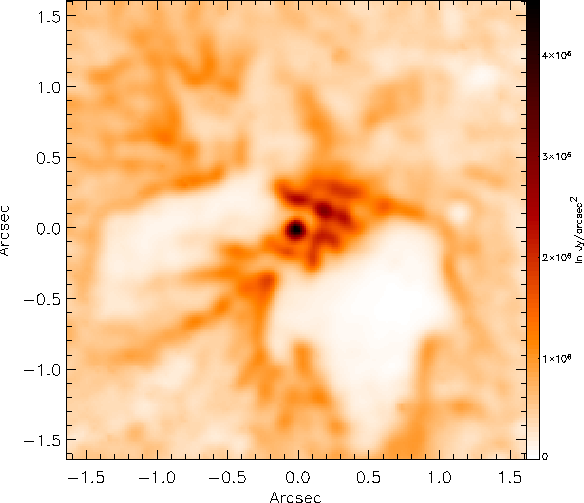Combining MIDI and NACO observation in thermal infrared allows to
obtain high spatial resolution observations of dusty environments. The
typical resolution of NACO in L' band is about 100mas and the strehl
ratio provided by the AO allows to reach a resolving power up to
40-60mas using deconvolution techniques. MIDI used with UTs provides
acquisition images improved by the MACAO AO system with a typical
resolution of 230mas at 8.7![]() m, that can also be increased up to
120-150mas. MIDI in interferometric mode, provides a typical resolution
of 20mas, but usually only a handful of visibility measurements are
recorded, limiting the complexity of the geometrical information
extracted. Hence, the complementary use of NACO is well suited to
observe complex extended objects. Several examples are shown: Eta Car,
the AGB star RY Sgr and the planetary nebulae CPD-568032 and QX Pup.
m, that can also be increased up to
120-150mas. MIDI in interferometric mode, provides a typical resolution
of 20mas, but usually only a handful of visibility measurements are
recorded, limiting the complexity of the geometrical information
extracted. Hence, the complementary use of NACO is well suited to
observe complex extended objects. Several examples are shown: Eta Car,
the AGB star RY Sgr and the planetary nebulae CPD-568032 and QX Pup.
